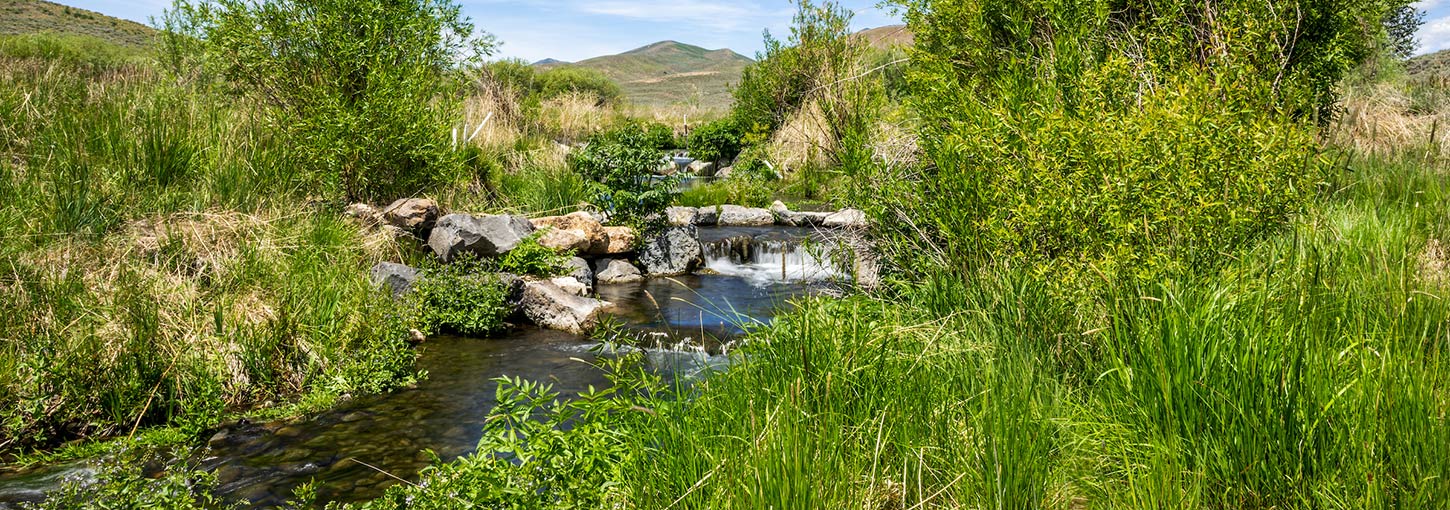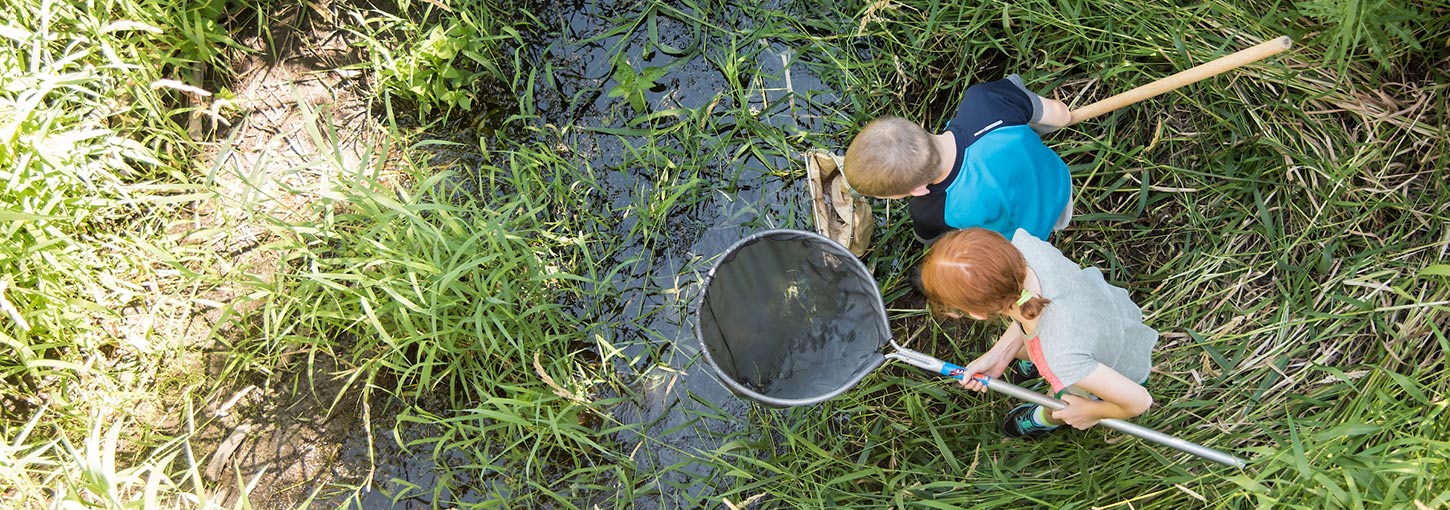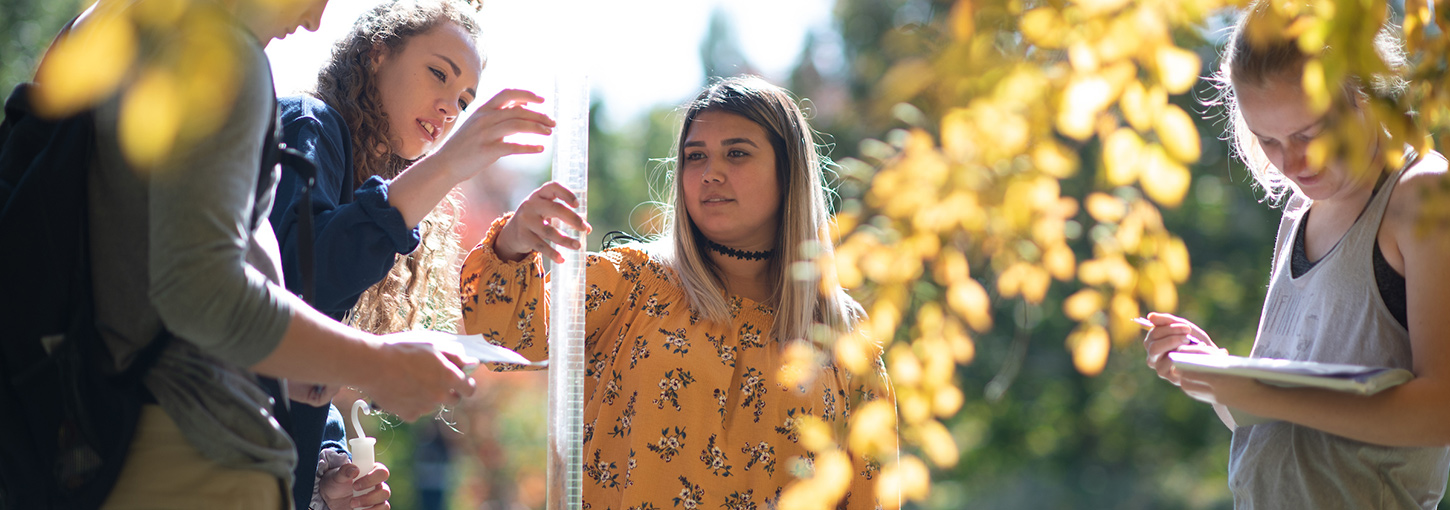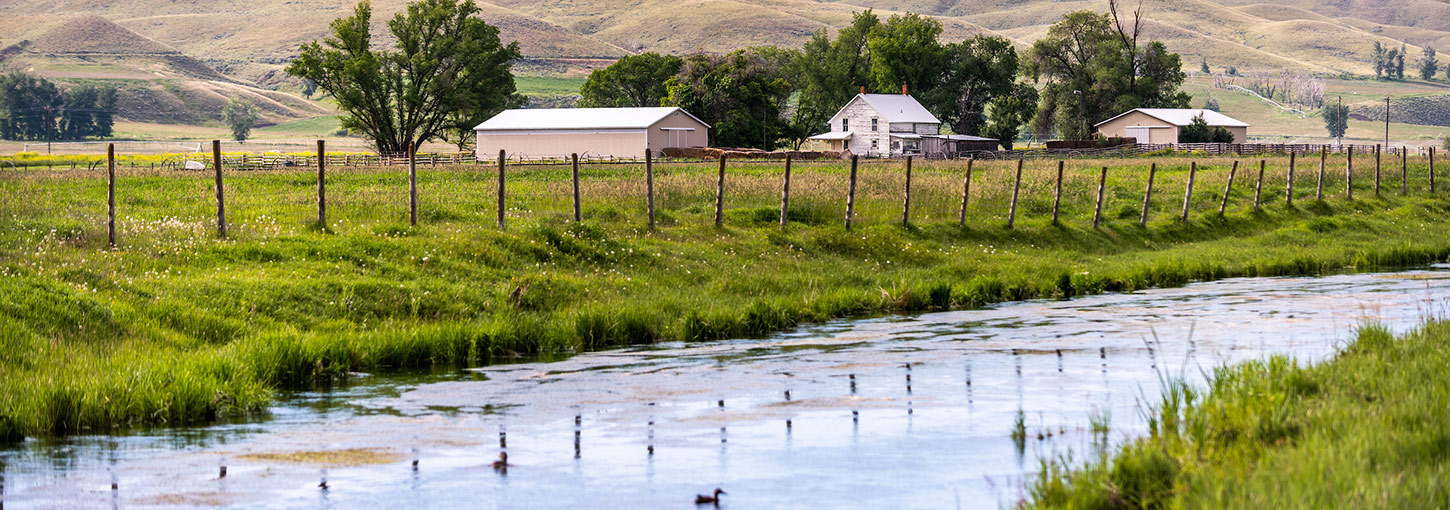Water
Water resources are often scarce in the western United States. In Idaho, we depend on water for industries such as agriculture and recreation, and for household consumption. For that reason, the University of Idaho is committed to using responsible water management practices and educating future leaders on water conservation. Through meaningful research and partnerships, the U of I is learning how to preserve and protect the precious water resources of Northern Idaho. Explore the stories and resources below and learn more about how the U of I is a model of sustainable water use and research.
U of I Water Management & Projects
Read more about past projects and campus water management systems.
The Paradise Creek Restoration project relocated Paradise Creek from under Paradise Creek Street to the north of the Student Recreation Center. The project realigned the creek to its historic channel while creating habitat and establishing a riparian vegetation corridor. Nearly 19,000 trees and shrubs were planted to provide structure to creek banks, improve water quality, and improve the native biodiversity of campus. This project was a result of a multi-agency and organizational partnership on the federal, state, and municipal levels. Now, Paradise Creek provides a peaceful place on campus to enjoy nature and is a thriving ecosystem for native flora and fauna.
For over 30 years, the University of Idaho has used reclaimed water to irrigate much of the campus landscape. Located in the Palouse Basin of Northern Idaho, the U of I receives much of its water from the aquifers of the Grande Ronde and Wanapum Strata. The aquifers have been in a steady state of decline since 1967 due to unsustainably high rates of water use as the human population continues to grow in the region. The declining aquifer, coupled with drought in the early 1970s, led the U of I to begin searching for alternative water sources for irrigating its campus.
In 1977, the U of I established a reclaimed water system for 183 acres of campus irrigation. Through an agreement with the City of Moscow, the U of I obtained a water right to use the discharge from the city’s wastewater treatment plant. This agreement reduces pressure on the demand for water from the aquifer and provides high-quality, nutrient-rich water for irrigation. The water is stored in a 500,000 gallon reservoir at the treatment plant, and in two additional storage lagoons at the U of I golf course. The reclaimed water is distributed through approximately five miles of main line and then over 60 miles of irrigation water lines. The U of I has pumped nearly 2.6 billion gallons of reclaimed water since 1977, greatly decreasing the rate of decline of the Grande Ronde aquifer. In 2021 alone, the U of I used 93 million gallons of reclaimed water to irrigate our campus.
Benefits of using reclaimed water include:
- Reduces the demand for the local aquifer
- Reduces fertilizer use in irrigated areas since the wastewater treatment plant effluent can provide plant nutrients
- Protects the health of Paradise Creek by reducing the points of discharge, helping to regulate the bacteria as well as temperature
- Promotes overall good stewardship of university resources
Interested in researching irrigation water management? The Kimberley Research and Extension Center has a program that focuses on irrigation scheduling and water and equipment management, including urban and suburban settings, for water conservation. Learn more about the Irrigation Water Management research program.
The University of Idaho is a member entity in the Palouse Basin Aquifer Committee (PBAC) which monitors, analyzes, manages and conserves the groundwater supply in the Palouse Basin region. PBAC is a collaborative, bi-state consortium with representatives from the Cities of Pullman and Moscow, Whitman and Latah Counties, Washington State University and the University of Idaho.
The Palouse Groundwater Basin is the sole source of drinking water for the region. The Basin includes two aquifers, the upper and the lower, that vary in their rate of recharge. When the first wells were drilled in the region in the late 1800’s, the aquifers were flowing artesian, rising to as much as 25 feet above the surface. Since then, water levels have been in a continual state of decline.
In the 1960’s, the University of Idaho was a leader in forming the Pullman-Moscow Water Resources Committee, PBAC’s predecessor, to research the dynamics of the Basin and find a solution for an alternative water supply.
By the 1980’s decline was at a rate of more than 1 foot per year. In 1992, the Ground Water Management Plan was created to address the declining groundwater table and to ensure a safe supply of groundwater in terms of quantity and quality. The rate of decline has decreased and is now at a rate of 0.7 feet per year.
PBAC hired a consultant to generate recommendations for project implementation of an alternative water supply project. You can read the final report on the PBAC website.
Stormwater is runoff from rain and melting snow, which is then collected by the campus stormwater collection system and discharged into local waterways such as Paradise Creek or Hog Creek. Learn more about stormwater management from the Student Sustainability Cooperative.
The University of Idaho offers the Stormwater and Erosion Education Program for those in the construction industry and related disciplines who want to improve their skill, understanding and marketability in the stormwater and erosion control field. Learn more about the Stormwater and Erosion Education Program.
Research & Partnerships
Through community partnerships and innovative research institutes, the U of I is a model for sustainable water use and education. Learn more about the work we do on campus and in our community by visiting the sites below.
- IDAH20
- Idaho Water Resources Research Institute
- Community Water Resource Center
- PBAC
- Aquaculture Research Institute
Why Is This Important?
Water is a vital resource for all life. The University of Idaho Moscow Campus is located above the Grande Ronde and Wanapum aquifers, supplying us with water for drinking, irrigation and other daily activities. But the water supply in the aquifer system for the Palouse basin region has been declining since the 1960s. The shrinking aquifer has significant implications for our future. Our growing population combined with a changing climate makes the situation even more serious. As a sustainable institution, the University of Idaho is committed to using responsible water management practices and engaging in water research and partnerships to reduce demand on the aquifer and help conserve water for today and future generations.
Ways You Can Help
With the declining levels of the Grande Ronde and Wanapum aquifers, it is imperative that the U of I use sustainable practices to reduce how much water we use daily. There are many ways Vandals can join us in conserving the water supply of our aquifers:
- On-campus students can take shorter showers, only do laundry when they have a full load, turn off the water when brushing their teeth, water their plants with cooled cooking water and volunteer with organizations that promote water conservation or research.
- Off-campus students and faculty and staff who are Moscow residents can do all the above and can also participate in the City of Moscow’s Conservation Device Program, Fixture Rebate Program and Wisescape Rebate Program. More information on water conservation with the City of Moscow can be found on the City of Moscow's Conservation website.
If you would like to learn more about water, the following are great learning resources:










